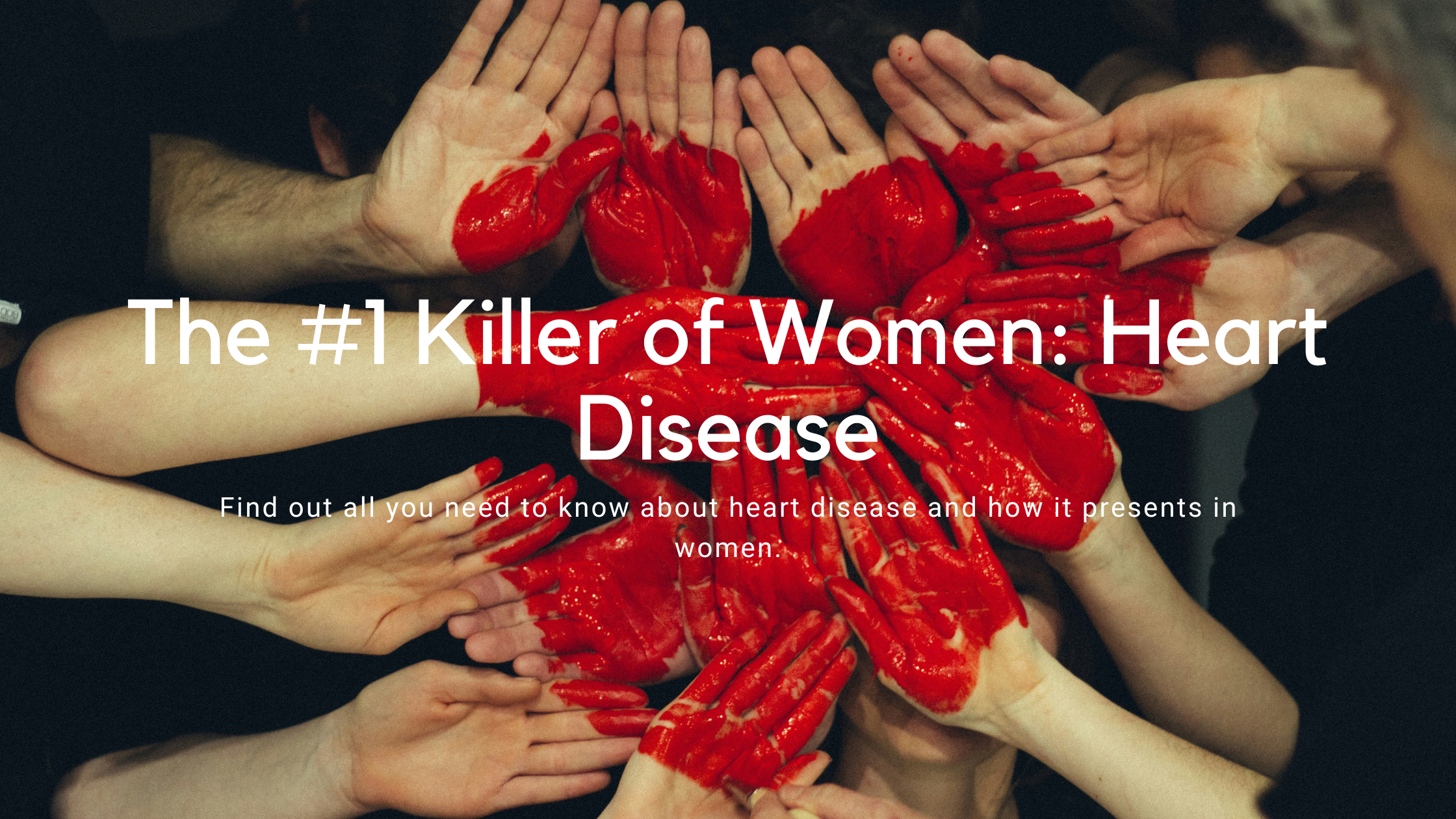Heart disease, or cardiovascular disease (CVD), is the leading cause of death among women, taking nearly 400,000 lives in the U.S. in 2013 alone. While deaths from heart disease have decreased in women over 65, rates in younger women (under 55) have stalled or even worsened.
Why is this happening? Women experience different risk factors than men, but they are often underdiagnosed and undertreated. On top of that, heart disease doesn’t always look the same in women, symptoms can be more subtle and harder to recognize.
Understanding these unique risks is the first step to better prevention, earlier detection, and improved treatment.
Key Heart Disease Risk Factors in Women
Women face both traditional and lesser-known risk factors for heart disease:
- Traditional risk factors: High blood pressure, high cholesterol, diabetes, smoking, obesity, and physical inactivity.
- Women-specific risk factors: Pregnancy-related conditions, breast cancer treatments, autoimmune diseases, and depression.
Even though awareness of cardiovascular disease in women grew from 30% in 1997 to 54% in 2009, progress has stalled and women still receive less aggressive care than men. For example, they are less likely to be prescribed cholesterol-lowering medication or enrolled in cardiac rehab after a heart attack.
This means women need to be their own best advocates asking the right questions and ensuring they get the care they deserve.
Coronary Artery Disease vs. Ischemic Heart Disease: Why It Matters for Women
Doctors often focus on coronary artery disease (CAD) blockages in major arteries. However, ischemic heart disease (IHD) is a broader term that also includes problems with small blood vessels (microvascular disease), which are more common in women.
Women are less likely to have major artery blockages but more likely to have poor blood flow due to small vessel disease, which isn’t always detected with traditional tests.
The Women’s Ischemia Syndrome Evaluation (WISE) study highlighted these female-specific differences, but many doctors still overlook microvascular disease when assessing heart risk in women.
If you have symptoms like chest pain, shortness of breath, or extreme fatigue but your tests come back “normal” it is important to push for further evaluation.
Sex vs. Gender Differences in Heart Disease
Understanding both biological (sex) and societal (gender) factors is key to protecting your heart health:
- Sex differences (biological): Hormones, genetics, and how the body responds to conditions like high blood pressure or diabetes.
- Gender differences (social and behavioral): Women may delay seeking care, experience more stress, or have different lifestyle habits than men.
Heart disease prevention isn’t one-size-fits-all, it needs to be tailored to women’s unique biology and life experiences.
Recognizing the Signs: How Heart Disease Symptoms Differ in Women
Women’s cardiovascular disease symptoms often differ from the classic chest pain associated with heart attacks in men. Instead, women may experience:
- Unusual fatigue
- Shortness of breath
- Nausea or dizziness
- Pain in the jaw, neck, back, arm or stomach
- Heartburn-like discomfort
Because these symptoms can be more subtle, they are often misdiagnosed or dismissed—leading to delays in critical treatment. Awareness of these differences is essential for early detection.
Traditional CVD Risk Factors in Women
Diabetes
Women with diabetes have triple the risk of dying from heart disease compared to women without diabetes. It also increases the risk of heart failure, stroke, and peripheral artery disease (PAD).
What you can do: Manage your blood sugar aggressively and know that women may need more exercise than men to see the same heart benefits.
High Blood Pressure (Hypertension)
While men tend to develop high blood pressure earlier, women over 60 are more likely to have it and less likely to have it well controlled.
Goal: Keep your blood pressure below 140/90 mmHg through diet, exercise, and, if needed, medication.
High Cholesterol
Women benefit even more than men from statins (cholesterol-lowering drugs) but are less likely to be prescribed them. Some research suggests statins may increase the risk of diabetes in women, but the heart benefits often outweigh this risk.
If you are at moderate-to-high risk of heart disease, discuss statins with your doctor.
Obesity
Even modest weight gain significantly increases heart disease risk in women, more so than in men.
Aim for a healthy, sustainable weight through balanced nutrition and at least 150 minutes of exercise per week.
Smoking
Women who smoke have a 25 percent higher risk of cardiovascular disease than male smokers. The combination of smoking and birth control pills dramatically increases heart attack and stroke risk.
Quitting today can lower your risk. Counseling, nicotine replacement, and support programs can double your chances of success.
Lesser-Known Heart Disease Risks Unique to Women
Pregnancy-Related Conditions and Heart Disease
Women with certain pregnancy complications are at higher risk of heart disease later in life.
- Preterm birth: Women who give birth before 37 weeks have an increased risk, especially if they deliver before 34 weeks.
- High blood pressure in pregnancy (preeclampsia and gestational hypertension):
- Nearly four times more likely to develop high blood pressure later
- Twice as likely to develop heart disease
- Almost twice as likely to have a stroke
- Gestational diabetes: Increases the risk of type 2 diabetes by seven times and heart attacks by four times.
Pregnancy complications are early warning signs of future heart disease. Women with these conditions need lifelong heart monitoring.
Autoimmune Diseases and CVD
Women are far more likely than men to have autoimmune diseases, which increase inflammation and damage blood vessels.
- Rheumatoid arthritis (RA): Increases the risk of heart attack by two to three times and stroke by 50 percent.
- Lupus (SLE): Women with lupus have an alarmingly higher risk of heart attack up to 50 times greater than the general population.
Standard heart risk calculators often underestimate risk in women with autoimmune diseases. If you have an autoimmune condition, talk to your doctor about a more tailored heart risk assessment.
Menopause and CVD
Before menopause, women have lower cardiovascular disease risk than men but after menopause, that protection fades.
- Younger women (ages 50–59): May see some heart benefits from hormone therapy.
- Older women (ages 60+): May face more risks than benefits.
Hormone therapy should not be used solely to prevent heart disease, but it may still be an option for managing menopause symptoms.
Taking Control of Your Heart Health
Heart disease is not just a men’s health issue, it is the leading cause of death in women. Women’s cardiovascular health must be approached with a more tailored, gender-specific perspective one that moves beyond the traditional male-centered model of heart disease. in the meantime, take action to protect your health by:
- Knowing your risks: especially if you have pregnancy complications, autoimmune diseases, or a history of depression.
- Prioritizing regular screenings: even if you feel healthy.
- Advocating for yourself: don’t hesitate to ask your doctor for more tests or a second opinion.
Your heart health is in your hands. The earlier you take action, the better your chances of preventing heart disease. It is never too soon (or too late) to start.
Sources:
Olvera Lopez E, Ballard BD, Jan A. Cardiovascular Disease. [Updated 2023 Aug 22]. In: StatPearls [Internet]. Treasure Island (FL): StatPearls Publishing; 2025 Jan-. Available from: https://www.ncbi.nlm.nih.gov/books/NBK535419/


